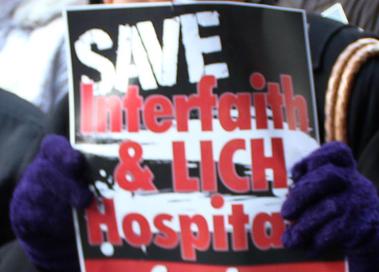NOT SO FAST! As LICH files closure plan, judge issues restraining order

lich_sign_B.jpg
The State University of New York on Wednesday filed a formal plan to close Long Island College Hospital in Cobble Hill. That action was quickly followed by a judge’s order temporarily restraining SUNY’s action.
The order issued by Judge Betsy Barros bars SUNY from taking any steps to close LICH, pending further hearings, WNYC reported.
The New York State Nurses Association and Local 1199 SIEU told NY1 that a judge would hear arguments in the case on March 7.
